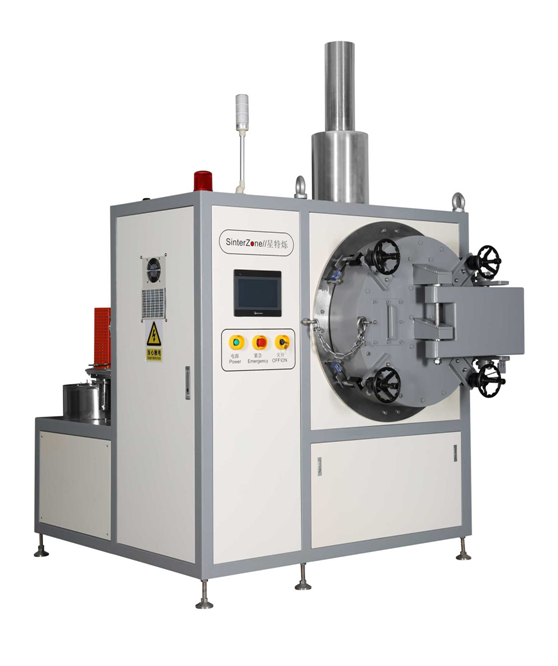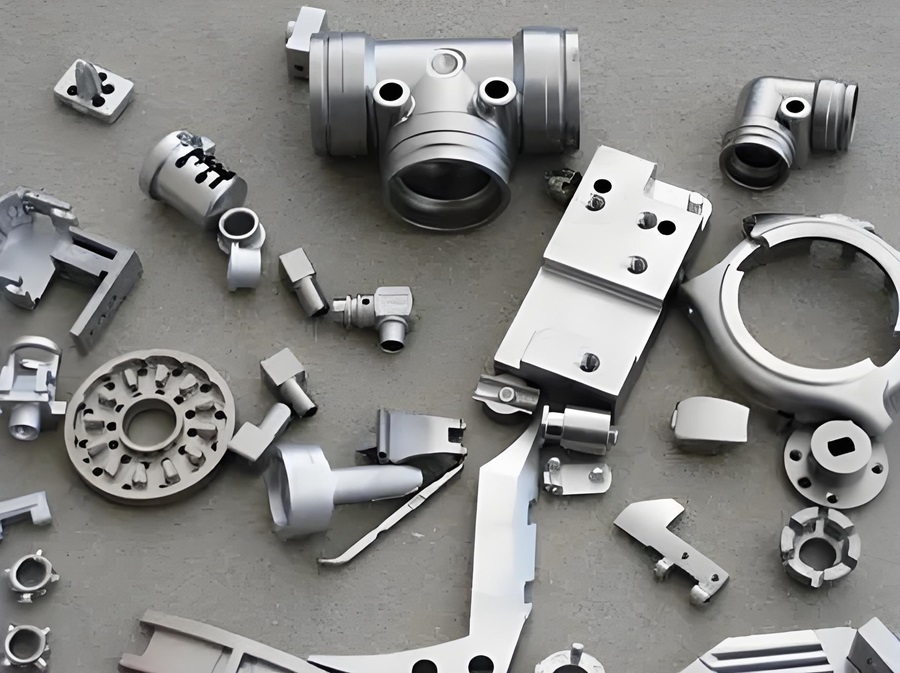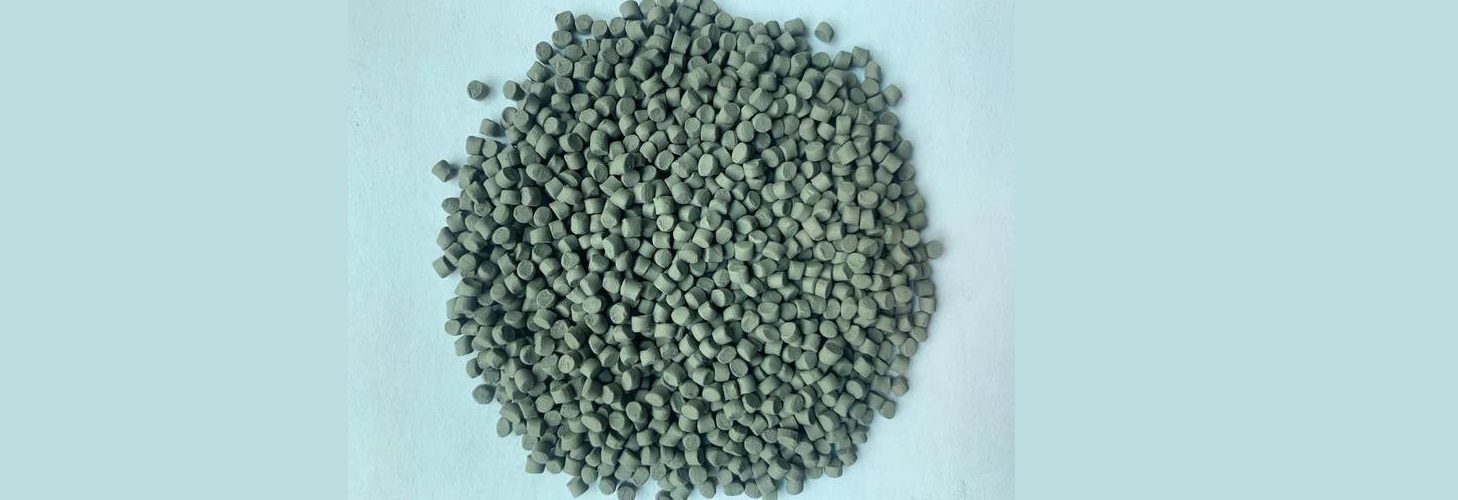A Comprehensive Exploration of Metal Injection Molding Feedstock
Metal Injection Molding (MIM) feedstock is a critical component in the MIM process, determining the quality, properties, and performance of the final product.
At JHMIM, we ensure consistent material quality in every batch through the development of custom feedstock. When sourcing from external feedstock suppliers, our engineers rigorously analyze the composition of the feedstock using specialized equipment to verify consistency. For this reason, we prefer to partner with long-standing, reputable suppliers and conduct thorough factory evaluations before making any purchases.
To deliver high-quality MIM parts, JHMIM is committed not only to monitoring feedstock consistency but also to ensuring that both metal powder and binder compositions meet our stringent standards.
This article delves into the intricacies of MIM feedstock, examining its composition, production methods, optimization techniques, and the challenges it presents in the MIM process. The discussion will also cover the importance of specific powders, binders, and debinding techniques, ensuring a thorough understanding of how each element contributes to the overall effectiveness of MIM technology.
Understanding Metal Injection Molding Feedstock
Definition and Fundamental Composition
Definition of MIM Feedstock
Metal Injection Molding (MIM) feedstock is a critical mixture of metal powders and binders used to produce complex metal components through molding and sintering. This unique blend serves as a bridge between the fields of powder metallurgy and injection molding, combining the strengths of both to create intricate parts with excellent mechanical properties and fine details. The feedstock is injected into a mold to form a “green part,” which is then subjected to debinding and sintering processes to achieve the desired shape and density.
Composition of Feedstock
The composition of MIM feedstock is fundamental to the success of the molding process. It primarily consists of two components: metal powders and binders. The metal powders, such as stainless steel, titanium alloys, and carbon iron, provide the desired mechanical and thermal properties in the final product. On the other hand, the binders—composed of thermoplastics, waxes, and other organic materials—facilitate the molding process by giving the mixture the necessary flow characteristics and structural integrity during injection. Each component’s quality and proportion significantly affect the moldability and final properties of the metal parts, making the careful selection and preparation of feedstock crucial.
Importance of Feedstock Powders for Metal Injection Molding
Critical Powder Characteristics
The metal powders used in MIM feedstock must possess specific physical and chemical properties to ensure the process’s feasibility and efficiency. Key characteristics include particle size distribution, morphology, and chemical composition. These factors influence the powder’s flowability, ability to fill molds accurately, and sintering behavior. For example, powders with a narrow particle size distribution and spherical morphology tend to have better flow characteristics and mold-filling capability, leading to fewer defects and higher-quality final products.
Carbon Iron & Nickel Powders
Carbon iron and nickel powders are commonly used in MIM due to their specific advantages. Carbon iron powders are favored for their cost-efficiency and desirable mechanical properties, such as high strength and hardness. Nickel powders, known for their excellent corrosion resistance and toughness, are ideal for applications in harsh environments. These powders are selected based on the specific requirements of different industrial applications, balancing performance, cost, and manufacturability.
Water & Gas Atomized Powders
Production Processes of Atomized Powders
The production process of metal powders significantly impacts their characteristics and suitability for MIM. Water and gas atomization are the two primary techniques used to produce metal powders for MIM. Water atomization involves spraying molten metal with high-pressure water jets, creating irregular-shaped particles with a wide size distribution. Gas atomization, on the other hand, uses inert gas jets to produce spherical particles with a more uniform size distribution and smoother surface finish. Each method has its advantages and cost implications, influencing the choice of powder for specific MIM applications.
Applications of Different Atomized Powders
Water and gas atomized powders find applications in various MIM products, including automotive components, medical devices, and consumer electronics. Water atomized powders are typically used in applications where cost is a primary concern, and the irregular particle shape does not negatively impact performance. In contrast, gas atomized powders are preferred for high-performance applications that require excellent flowability, packing density, and surface finish.
Physical and Chemical Properties of MIM Feedstock
Rheological Behavior and Viscosity
The rheological behavior and viscosity of MIM feedstock are critical factors influencing mold filling and the potential for defects in the final product. The feedstock must have a low enough viscosity at molding temperatures to flow easily into complex molds, yet be sufficiently viscous to maintain structural integrity. Understanding how feedstock behaves under different temperatures and shear rates helps in optimizing the molding process and minimizing defects such as voids, sink marks, and flow lines.
Thermal Stability and Shrinkage
During sintering, the thermal stability and shrinkage characteristics of the feedstock play a significant role in determining the dimensional accuracy and mechanical properties of the finished parts. Proper control of thermal expansion and shrinkage is essential to prevent warping, cracking, or distortion, ensuring the final product meets the required specifications. Understanding these properties helps in designing molds and selecting appropriate processing parameters.
Production and Optimization of Metal Injection Molding Feedstock
Feedstock Preparation Techniques
Selection and Treatment of Metal Powders
Selecting the appropriate metal powders is a critical step in feedstock preparation. Factors such as particle shape, size distribution, purity, and surface treatment (e.g., cleaning, drying, and surface modification) must be carefully considered to enhance feedstock performance. For instance, spherical particles with smooth surfaces are preferred for better flowability and mold filling, while high-purity powders minimize the risk of contamination and defects.
Binder System Design
The binder system in MIM feedstock is designed to achieve a delicate balance between flow characteristics and ease of removal during debinding. The binder must ensure uniform mixing with the metal powders, provide adequate strength during handling and molding, and be easily removable without leaving significant residues. The formulation of binder systems, including thermoplastic, water-soluble, and wax-based binders, is tailored to meet specific process and product requirements.
Mixing and Granulation Technologies for Feedstock
Mixing Techniques
Mixing is a crucial step in the preparation of MIM feedstock, and technologies such as high-shear and twin-screw mixing are employed to ensure uniform distribution of metal powders and binders. High-shear mixing provides excellent dispersion and uniformity, while twin-screw mixing offers better control over mixing parameters and is suitable for continuous production. Each method has advantages in terms of consistency, throughput, and scalability.
Granulation Processes
Granulation is the process of forming the mixed feedstock into granules suitable for injection molding. Techniques such as extrusion granulation are used to ensure the feedstock’s particle size and shape meet the stringent requirements for injection molding. Proper granulation improves feedstock flowability, reduces segregation, and enhances the overall quality of the molded parts.
Binder and Debinding Techniques
Binder Systems and Their Role in MIM
Binders are essential components in MIM feedstock, providing the necessary flow characteristics for molding and maintaining the shape of the “green part” before sintering. Different binder systems, including thermoplastic, water-soluble, and wax-based systems, offer various properties in terms of flexibility, strength, and mold release. The choice of binder affects the ease of processing, debinding time, and the quality of the final product.
Debinding Techniques Comparison
Debinding is the process of removing binders from the molded “green part” before sintering. Various debinding methods, such as solvent debinding, thermal debinding, and catalytic debinding, are used depending on the binder type and feedstock composition. Each method has its mechanisms, advantages, limitations, and suitability for different MIM feedstocks. For instance, solvent debinding is suitable for water-soluble binders, while thermal debinding is ideal for thermoplastic binders.
Key Factors in Feedstock Performance Optimization
Quality Control and Testing
Maintaining consistent product quality in MIM requires rigorous quality control and testing of feedstock properties. Tests such as density, flow rate, thermal stability, and impurity content evaluations are essential to ensure that the feedstock meets the required standards for molding and sintering. Regular quality checks help identify and rectify any deviations in feedstock composition or properties.
Formulation Adjustments and Process Optimization
Optimizing MIM feedstock involves making formulation adjustments and fine-tuning process parameters, such as temperature and mixing time, to enhance performance during injection molding. These modifications can improve mold filling, reduce defects, and enhance the quality of the final product. Continuous process optimization is necessary to adapt to changing material requirements and market demands.

Debinding furnace
Applications and Challenges of MIM Feedstock in the MIM Process
Essential Role of Feedstock in MIM Forming Process
Feedstock Performance Requirements in Injection Molding
The performance of feedstock in the injection molding stage is critical to the success of the MIM process. Feedstock must exhibit excellent moldability, filling capability, and demoldability to ensure accurate part formation. These requirements directly impact mold design and process parameter settings, influencing the quality and consistency of the final product.
Impact of Debinding and Sintering Processes
The characteristics of MIM feedstock significantly affect the debinding and sintering stages, determining the final product’s strength, density, and surface finish. Proper feedstock formulation ensures minimal shrinkage, warping, and other defects, resulting in high-quality metal parts that meet stringent industry standards.
Thermal Debinding, Catalytic Debinding, Solvent Debinding
Thermal Debinding
Thermal debinding involves heating the molded “green part” to remove binders through thermal decomposition. This method is suitable for specific binder systems and offers advantages in terms of production efficiency and cost. However, it requires precise temperature control to avoid defects such as cracking or distortion.
Catalytic Debinding
Catalytic debinding uses chemical reactions, typically with acidic catalysts, to break down binders. This process is faster and more precise than thermal debinding, making it ideal for complex parts with intricate geometries. It also minimizes the risk of defects associated with binder residues.
Solvent Debinding
Solvent debinding involves immersing the “green part” in a solvent to dissolve binders. This method is environmentally friendly and suitable for feedstocks with water-soluble binders. It offers good control over debinding rates and reduces the risk of defects related to thermal stresses.
Case Studies and Practical Applications
Real-World Applications
MIM feedstock is used in various industries, including aerospace, automotive, and medical, to produce high-performance components with complex geometries. Case studies highlight the specific challenges encountered in feedstock selection and preparation, such as segregation, agglomeration, and residual stress, and the solutions implemented to achieve desired outcomes.
Challenges and Solutions in Feedstock Selection and Preparation
Challenges in MIM feedstock selection and preparation include ensuring uniform mixing, preventing contamination, and achieving consistent quality. Solutions such as advanced mixing techniques, quality control measures, and feedstock formulation adjustments are employed to address these issues and optimize performance.

Powder injection molding parts
Conclusion: Key Considerations for MIM Feedstock Selection and Optimization
Summary of Key Points
Selecting and optimizing MIM feedstock involves careful consideration of powder characteristics, binder systems, and preparation techniques to achieve the desired performance during molding and sintering. Understanding these factors is essential for producing high-quality metal parts that meet industry standards.
Future Trends and Prospects in MIM Feedstock Development
The development of MIM feedstock is evolving with advancements in powder production, binder technology, and mixing methods. Future trends may include the use of innovative materials, improved formulations, and advanced processing techniques to enhance feedstock performance and expand the range of MIM applications.
Frequently Asked Questions (FAQs)
1. What are the key components of MIM feedstock?
– MIM feedstock consists of metal powders and binders. Metal powders provide the desired mechanical properties, while binders facilitate molding and maintain part shape before sintering.
2. Why is particle size distribution important in MIM feedstock?
– Particle size distribution affects powder flowability, mold filling capability, and sintering behavior, influencing the quality and performance of the final product.
3. What are the differences between water and gas atomized powders?
– Water atomized powders are irregular-shaped with a wide size distribution, suitable for cost-sensitive applications. Gas atomized powders are spherical with a narrow size distribution, preferred for high-performance applications.
4. How do binders affect the MIM process?
– Binders determine the feedstock’s flow characteristics, structural integrity, and debinding ease, affecting molding accuracy and final product quality.
5. What are the common challenges in MIM feedstock preparation?
– Challenges include ensuring uniform mixing, preventing contamination, achieving consistent quality, and optimizing binder systems for specific applications.
Contact Us for More Information
For more details on MIM feedstock and how it can benefit your specific application, feel free to contact us. Our team of experts is ready to assist you in selecting the optimal feedstock formulation for your needs.

